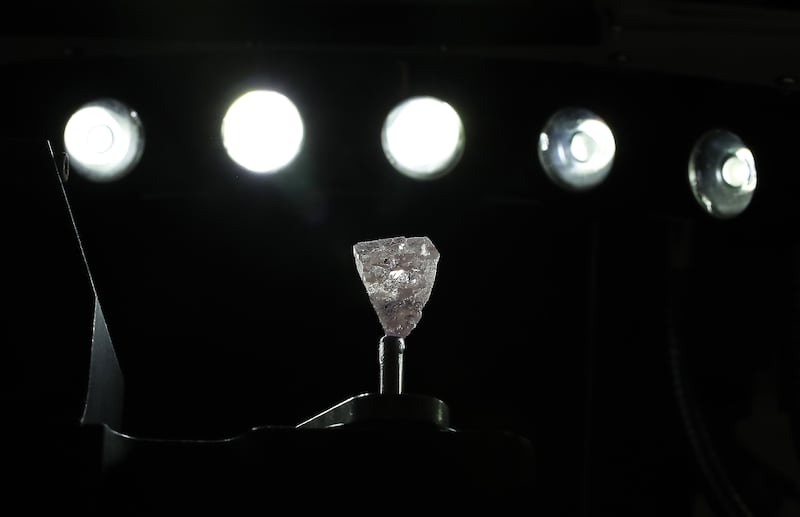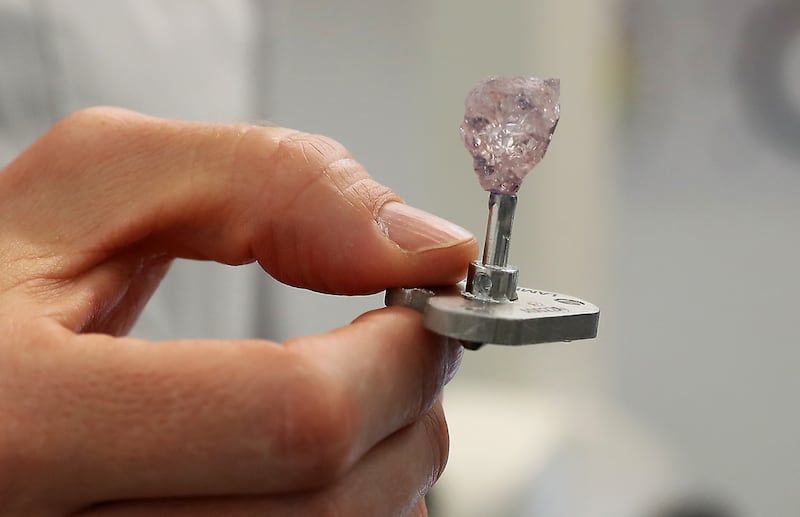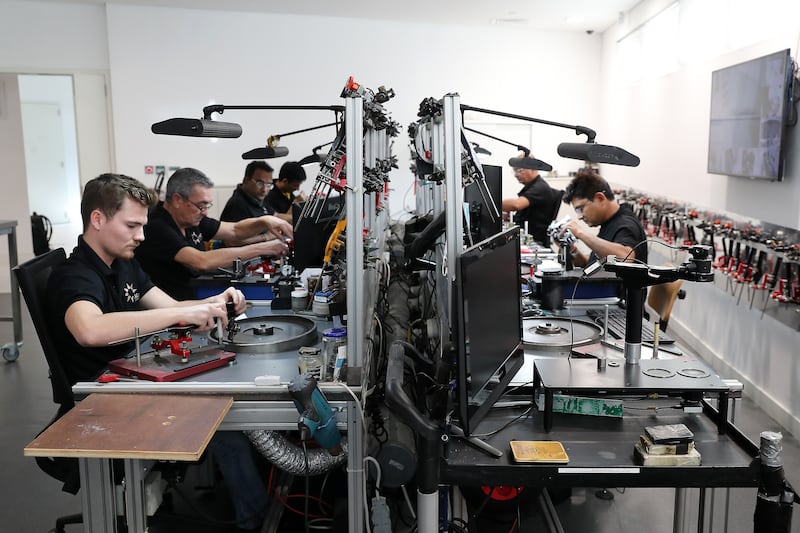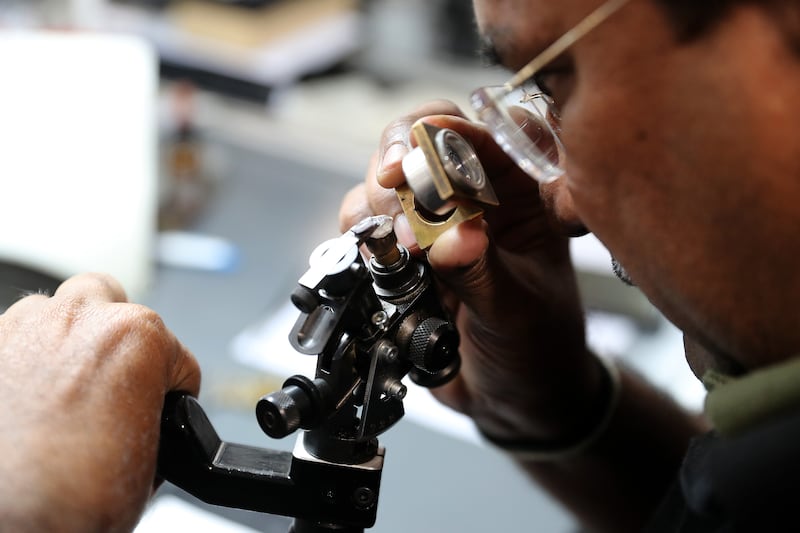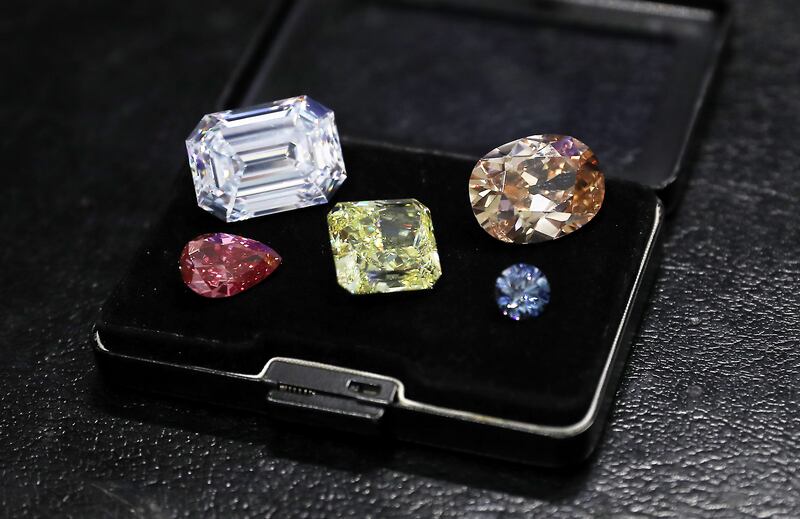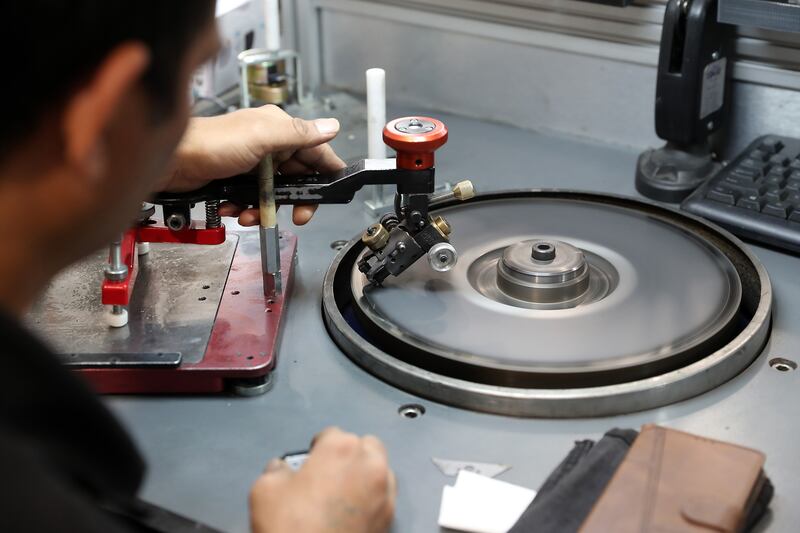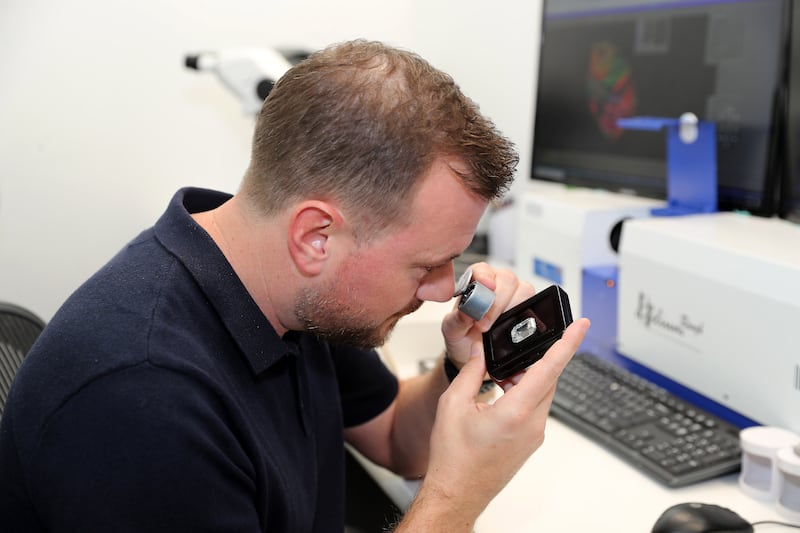Dubai's diamond industry is forever growing.
The emirate, no stranger to luxury and high-end living, is a leading hub for the trade of rough and polished diamonds.
In the first half of last year, $19.8 billion worth of the precious stones were traded through the UAE — an increase of 25 per cent.
The industry has grown thanks to Dubai's proximity to the large diamond mines in Africa and Russia, and to India, where many of the world's diamonds are polished.
One company at the heart of the diamond sector in Dubai is Almas Diamond Services, in Jumeirah Lakes Towers, where gems worth millions of dollars are routinely worked on.
The National took a tour of the site to see first-hand how such high-end stones are handled before being put on the market.
“We polish and manufacture diamonds here and focus on high-end stones,” said Alain Leysen, technical manager at Almas Diamond Services.
“We are not involved in the buying and selling of diamonds. Our clients, who are the owners of the diamonds, bring them to us to use our expertise to polish them.”
The company handles an average of 15 rough diamonds each month, processing between $50m and $100m worth every year.
Since 2015, the UAE has increased its rough diamond trade by 76 per cent, overtaking Belgium as the world’s leading hub for the sector, Dubai government said last year.
“We’ve worked on one diamond that was worth around $60 million,” Mr Leysen said.
“Most of the diamonds that come to us are bought at auctions and then their owners bring them to us to boil and polish.”
The sparkling success of Dubai's diamond trade
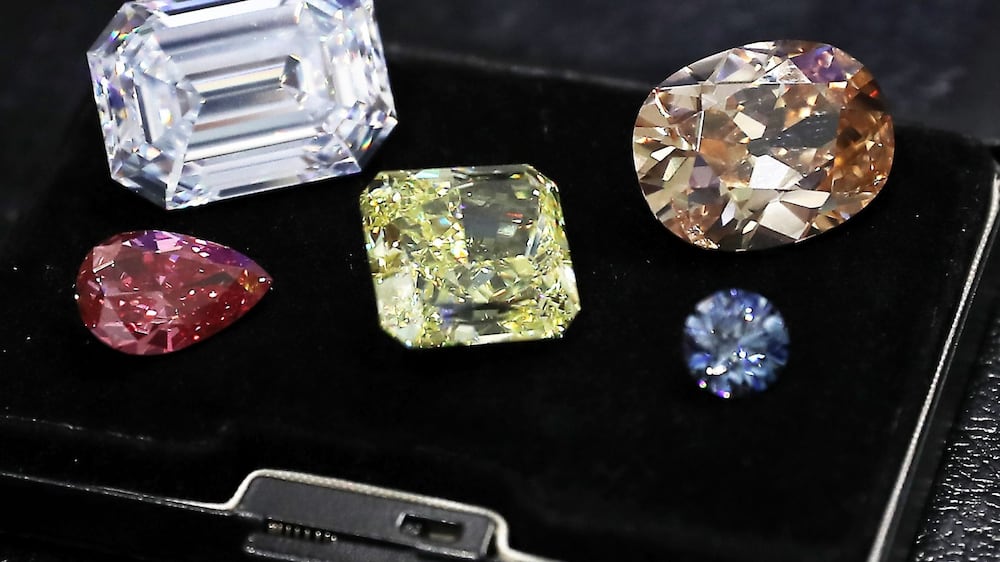
Mr Leysen explained how the process can be a time-consuming one, with little or no margin for error — unsurprising given the figures involved.
“First of all, we do a deep boiling overnight with some acids. This helps us to see the true colour of the diamond because it has been cleaned,” said Mr Leysen.
“They go into special pots and into a machine that’s like an oven for at least eight hours at high temperatures.
“That allows us to remove any dirt or impurities in the diamonds.”
The diamond will then be polished by the team of technicians.
“If a diamond is polished the wrong way or the polisher uses too much pressure then the diamond could crack,” said Mr Leysen.
“That’s why it’s important the polisher has the right experience and expertise for working with diamonds.
“It can be like cutting wood — if you do it wrong then you can crack the whole piece right through.”
Another vital part of the process is the use of a water jet laser to cut the stone. This can be an essential tool if the team decides the diamond is more valuable if broken up into smaller pieces.
One area of concern for the diamond industry has been the trading of conflict or blood diamonds.
These are diamonds illegally traded to fund conflict in war-torn regions.
It is a particular problem in parts of central and western Africa, however, Mr Leysen is confident the issue is not something that has affected the company.
“All of the origins are certified so we are 100 per cent sure we are not involved with any blood diamonds,” said Mr Leysen.
